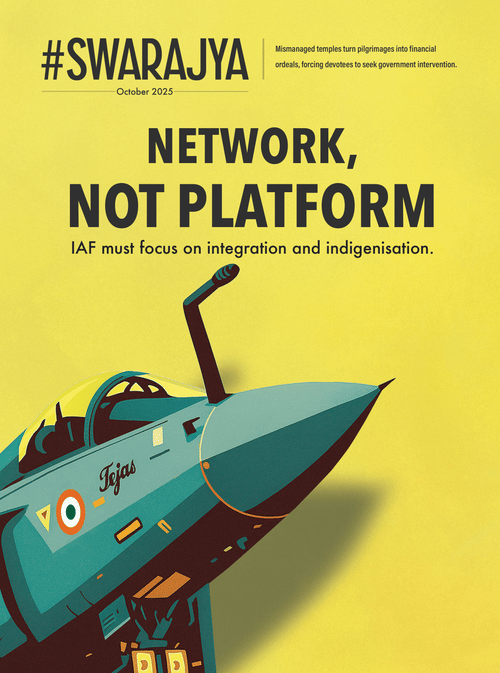News Brief
India's Record Diwali Spending: Rs 5.4 Lakh Crore In Goods, Rs 60,000 Crore In Services, Says Traders' Body CAIT
Swarajya Staff
Oct 22, 2025, 12:24 PM | Updated 12:24 PM IST
Save & read from anywhere!
Bookmark stories for easy access on any device or the Swarajya app.


India’s retail industry witnessed record-breaking business activity this Diwali, according to the Confederation of All India Traders (CAIT), Business Standard reported.
The organisation estimated sales of nearly Rs 5.4 lakh crore ($61.6 billion) in goods and Rs 65,000 crore ($7.4 billion) in services, driven by upbeat consumer confidence, festive energy, and the rise of homegrown products amid an ongoing boycott of Chinese goods.
According to CAIT, the 2025 Diwali season sales outperformed all earlier years, with business volumes sharply up from Rs 4.25 lakh crore in 2024.
The growth was broad-based, with major contributions from metropolitan as well as Tier-2 and Tier-3 cities, where shoppers spent enthusiastically.
An extended festive window spanning Navratri, Dussehra, and Diwali sustained retail momentum across major categories like jewellery, electronics, apparel, home décor, and food.
Despite inflationary concerns, strong consumer mood and attractive offers—ranging from heavy discounts to “vocal for local” campaigns—kept stores bustling.
Key Growth Drivers
Festive Optimism: Strong buying sentiment across essentials, gifts, and luxury goods powered the festive uptrend. CAIT’s survey across 70 major trade hubs recorded a significant rise in footfall and sales.
‘Vocal for Local’ Effect: The push for Indian-made products saw massive acceptance. CAIT estimated Chinese goods lost nearly Rs 1.25 lakh crore in potential sales as both traders and buyers shifted towards local options.
Category Expansion: Precious metals continued to shine with Dhanteras alone witnessing Rs 20,000 crore in gold and Rs 2,500 crore in silver sales. Apparel, electronics, home goods, and sweets also performed strongly.
Jewellery, electronics, home and lifestyle goods, and regional handicrafts emerged as the well performing segments during the festive season.
Dhanteras saw gold and silver dominate purchases, fuelled by upcoming weddings. Electronics contributed about 8 per cent of total festive sales as many consumers upgraded their gadgets and appliances.
Home improvement categories such as furniture, décor, and kitchenware also saw strong demand, as households refurbished living spaces for the festival.
A growing preference for handcrafted Indian goods benefited small businesses and artisans, including traditional diya-makers and local craftspeople.
While e-commerce retained a large share of festive shopping, offline markets thrived on festive ambience and personal shopping experiences.
CAIT noted that traditional stores benefited from immediate product availability but warned that online competition remains intense, calling for fair-trade regulations.
This record festive season underscored Diwali’s critical role in boosting India’s economy.
Traders expect the momentum to carry into the wedding season, projected to generate another Rs 6 lakh crore through nearly 48 lakh wedding ceremonies between November and December.
Despite strong sales, traders remain cautious about inflation, rural consumption, and rising input costs that could pressure profit margins in the months ahead.
Please click here to add Swarajya as your preferred and trusted news source on Google





